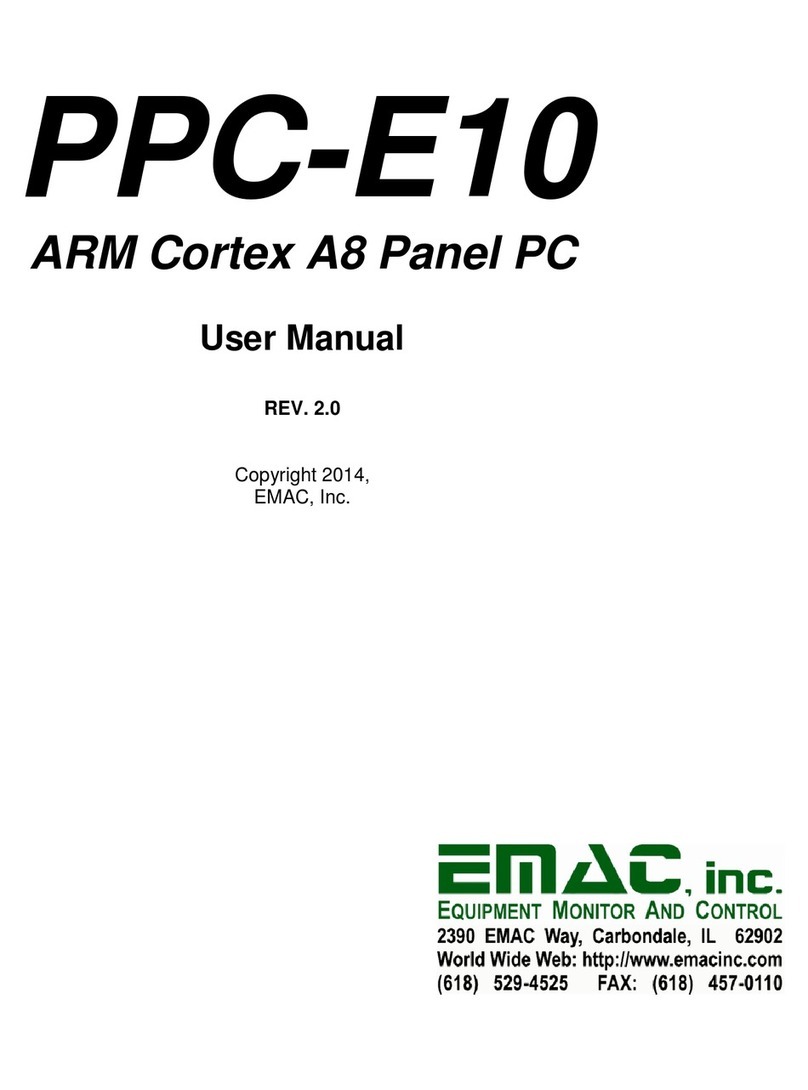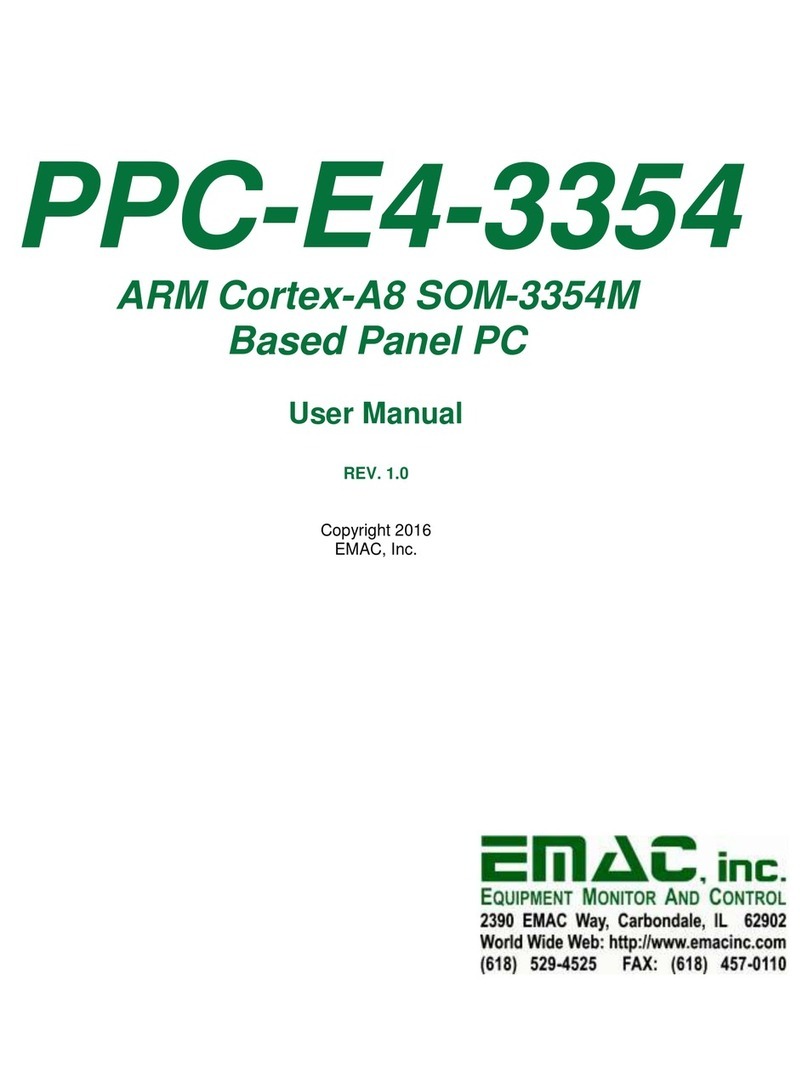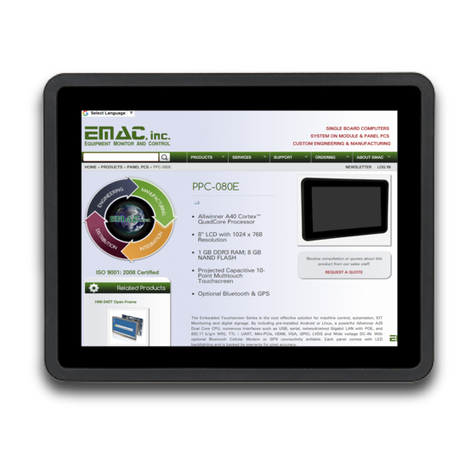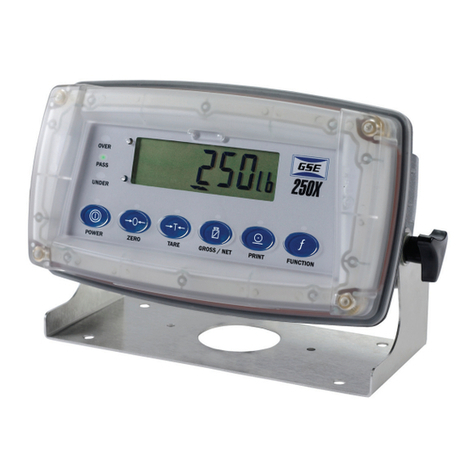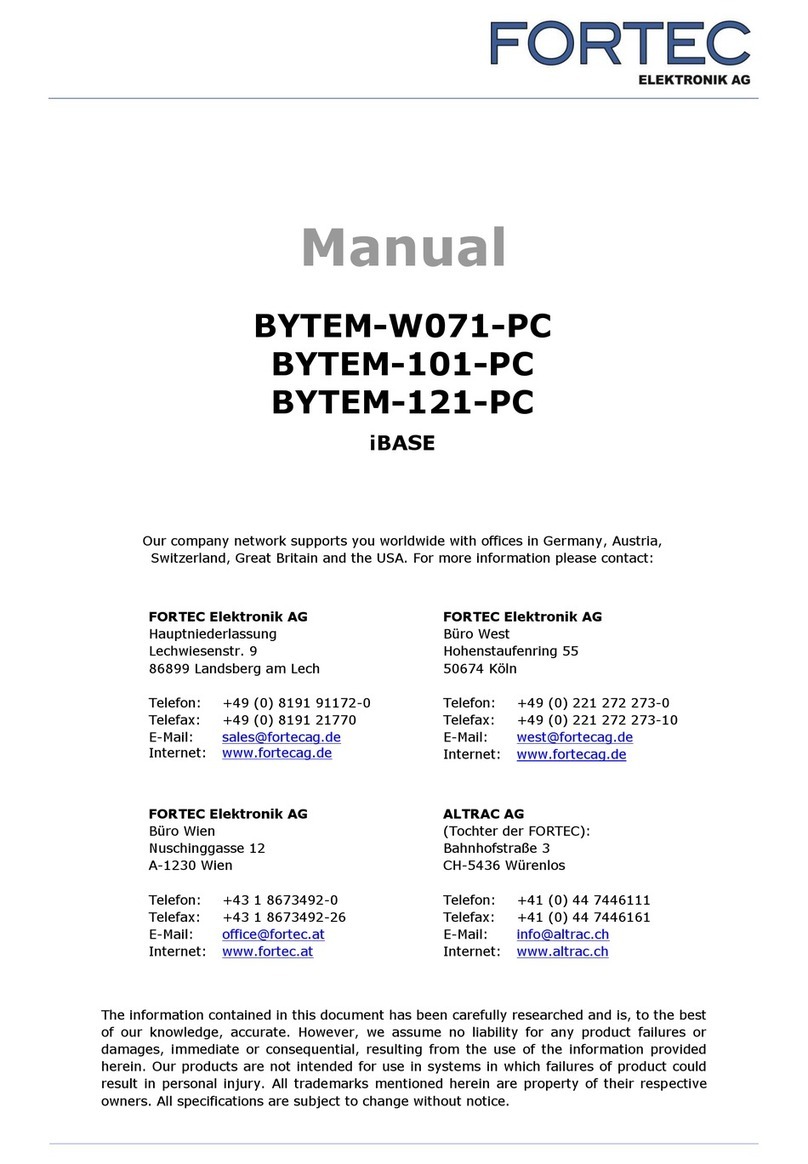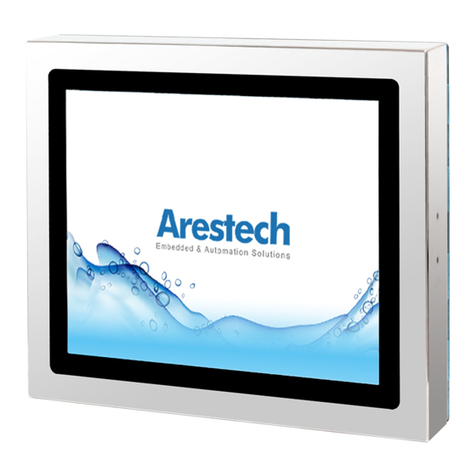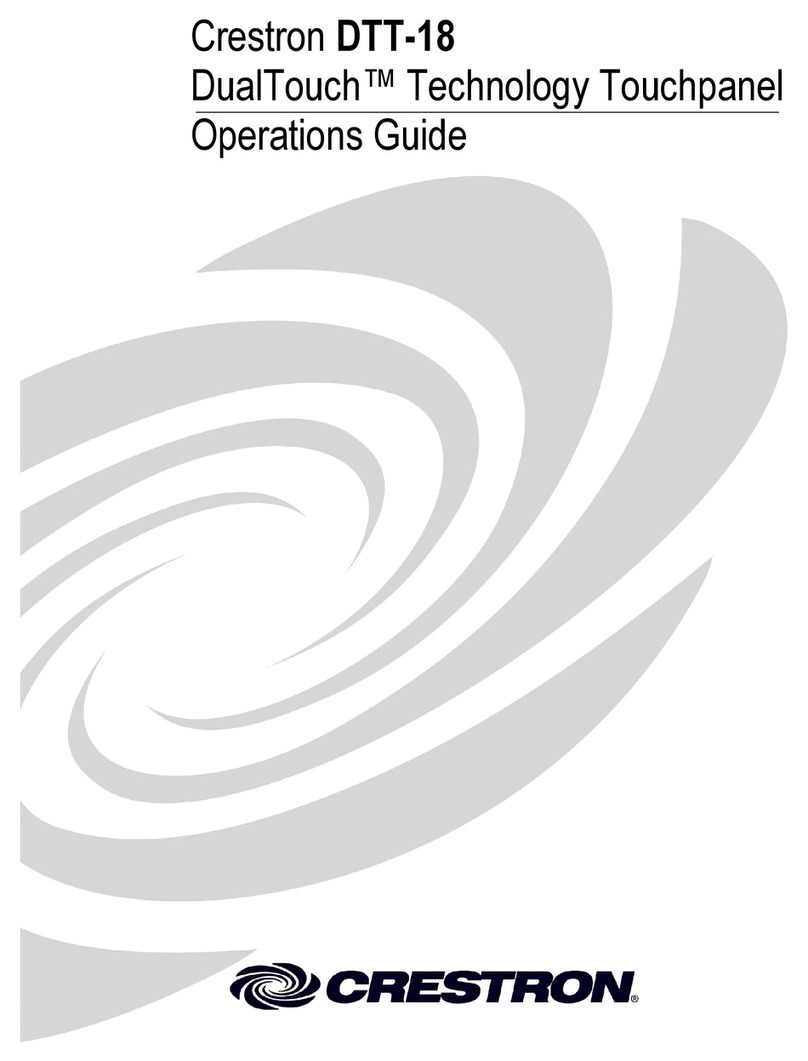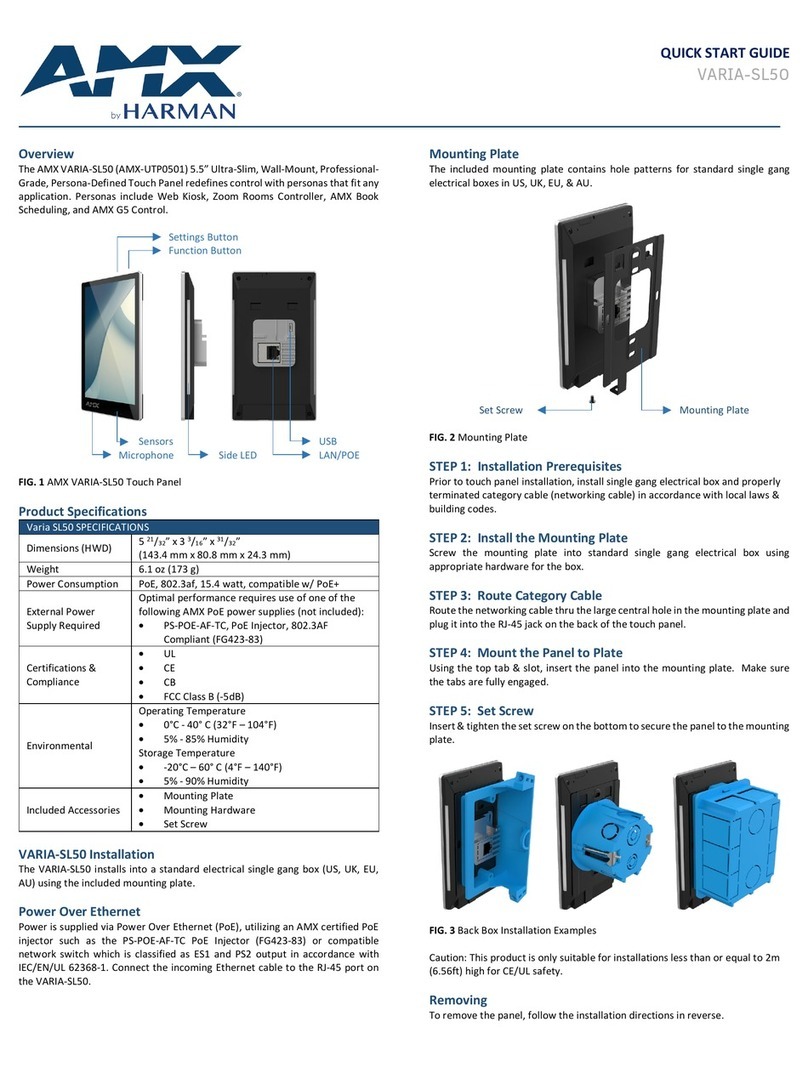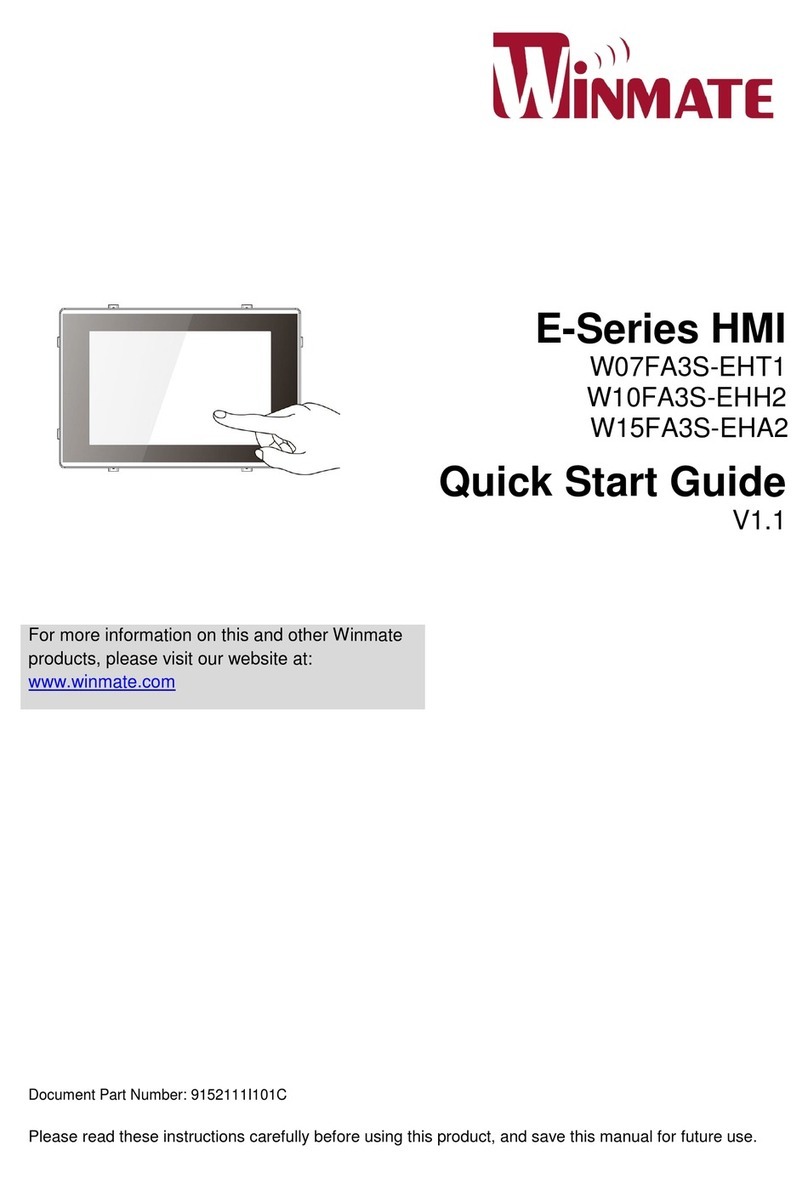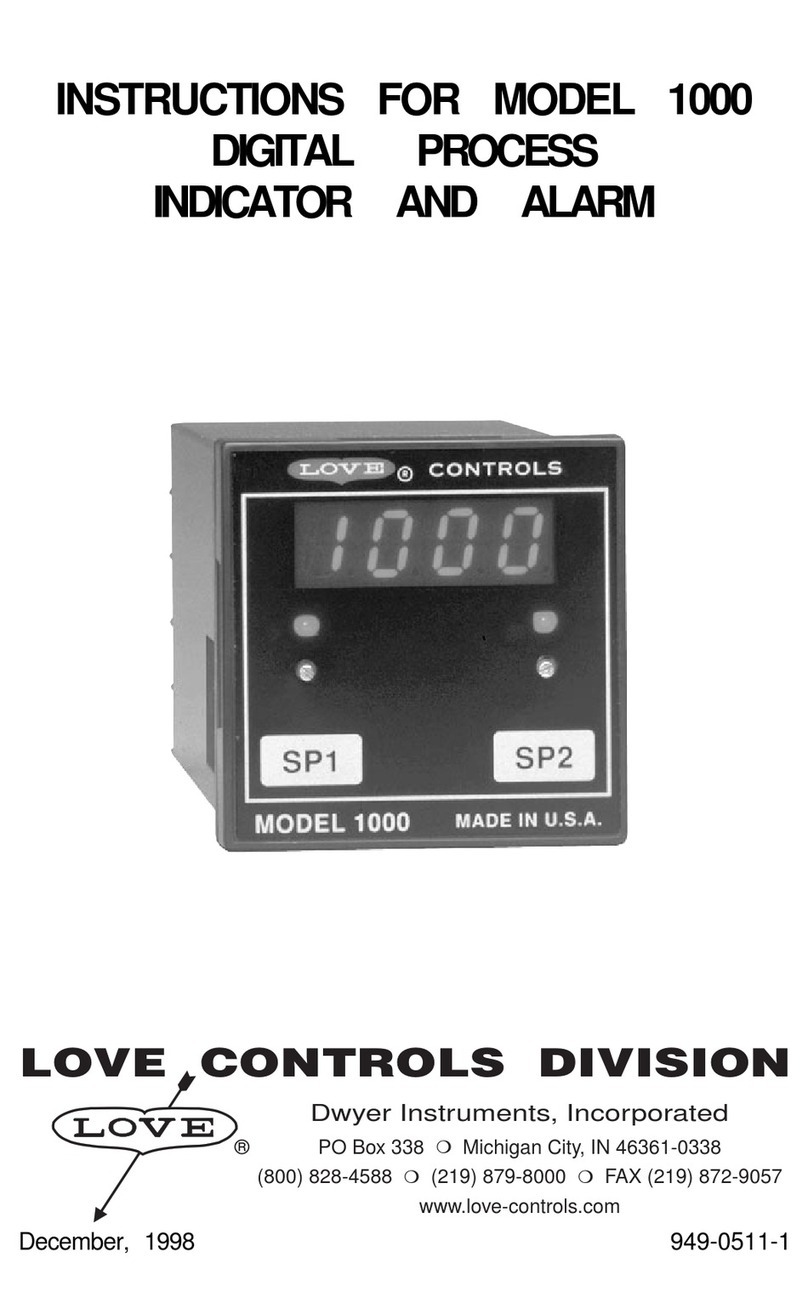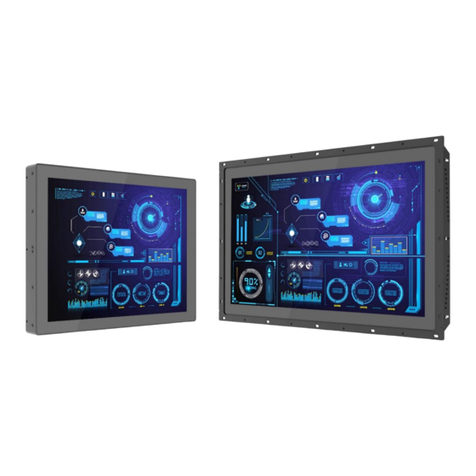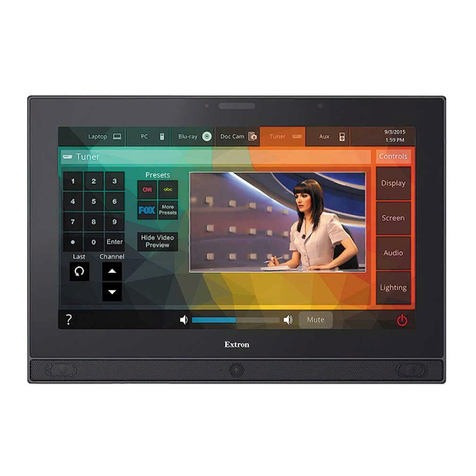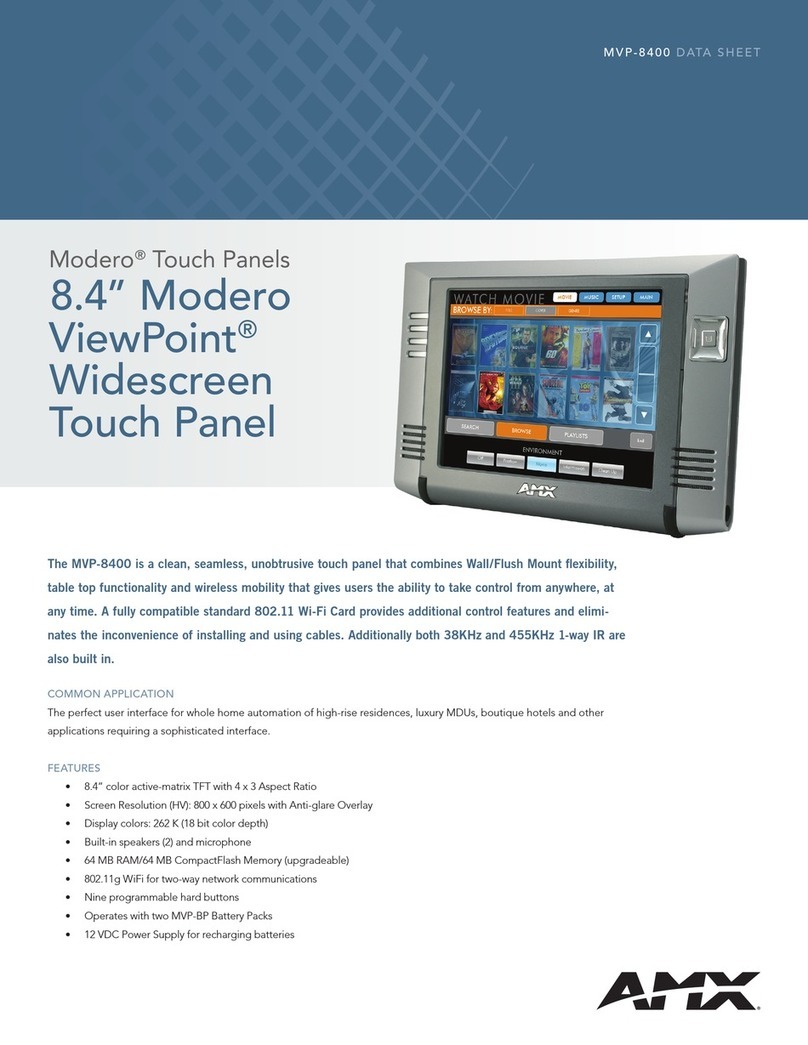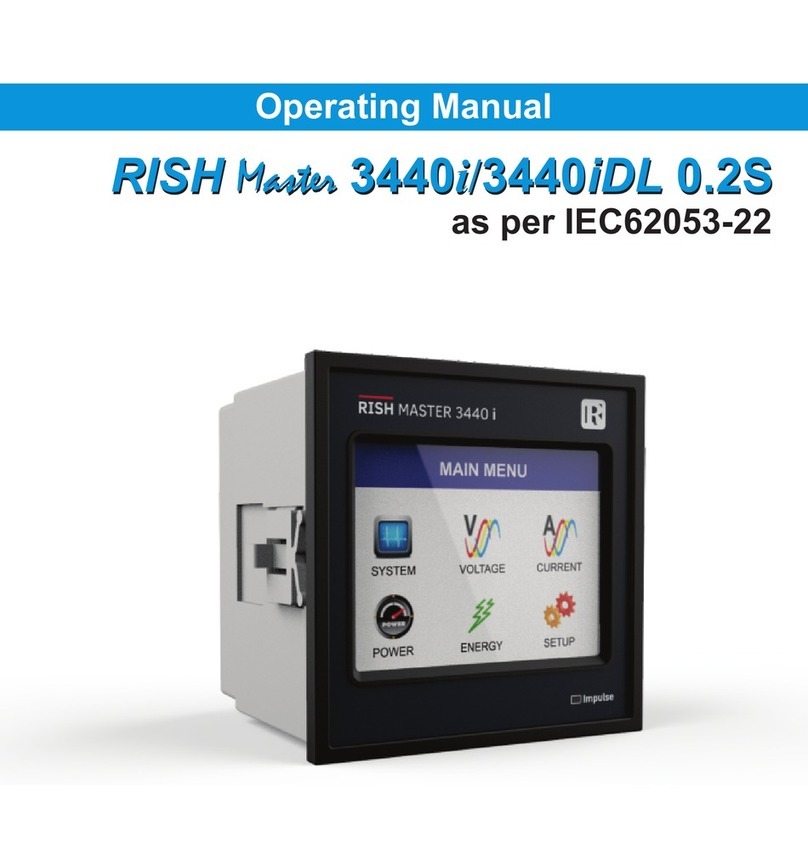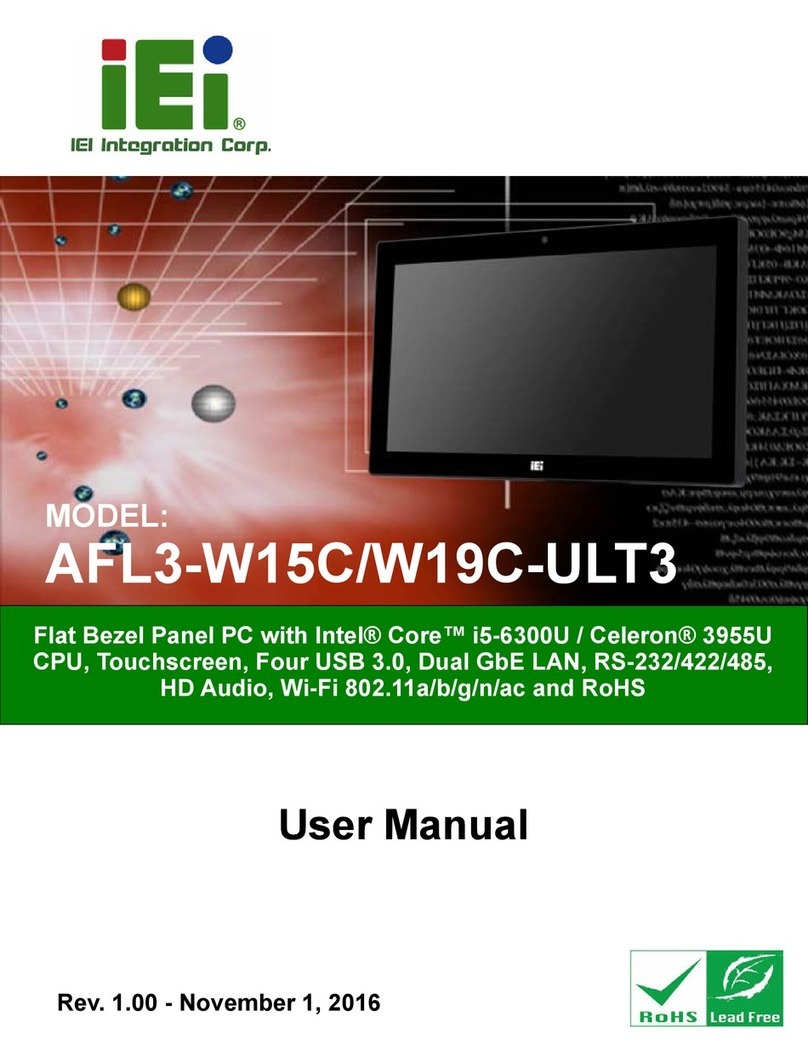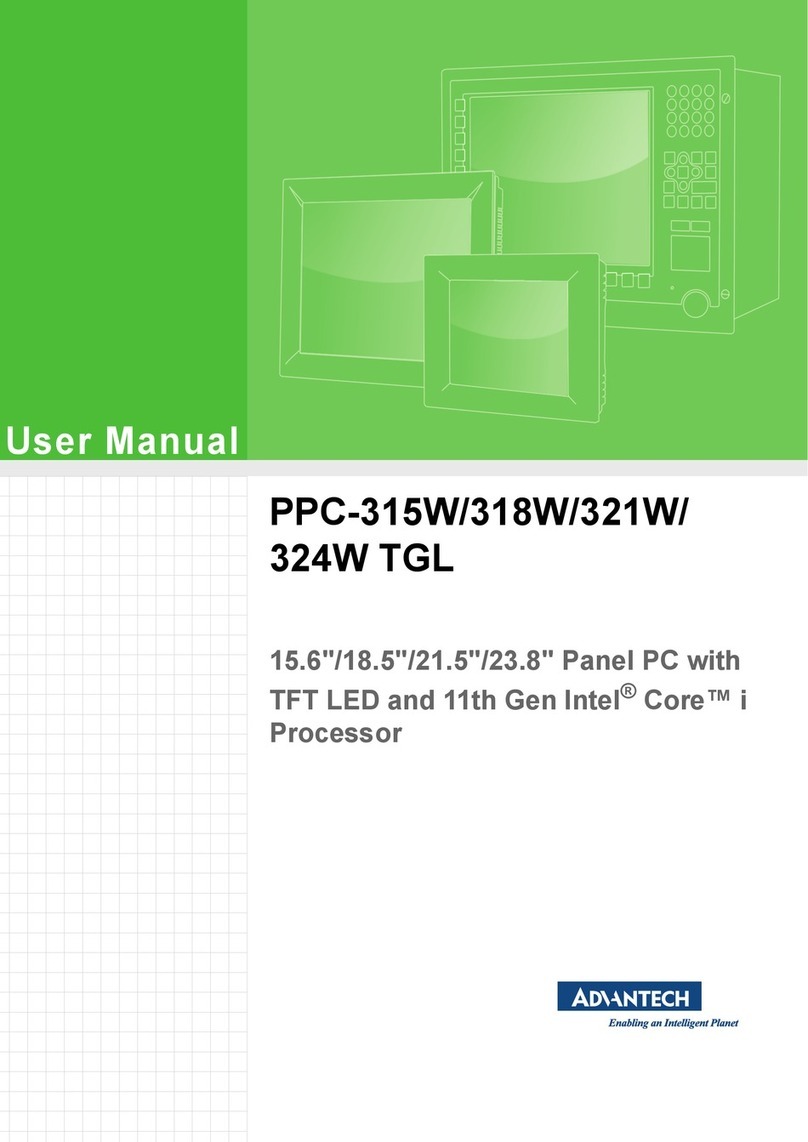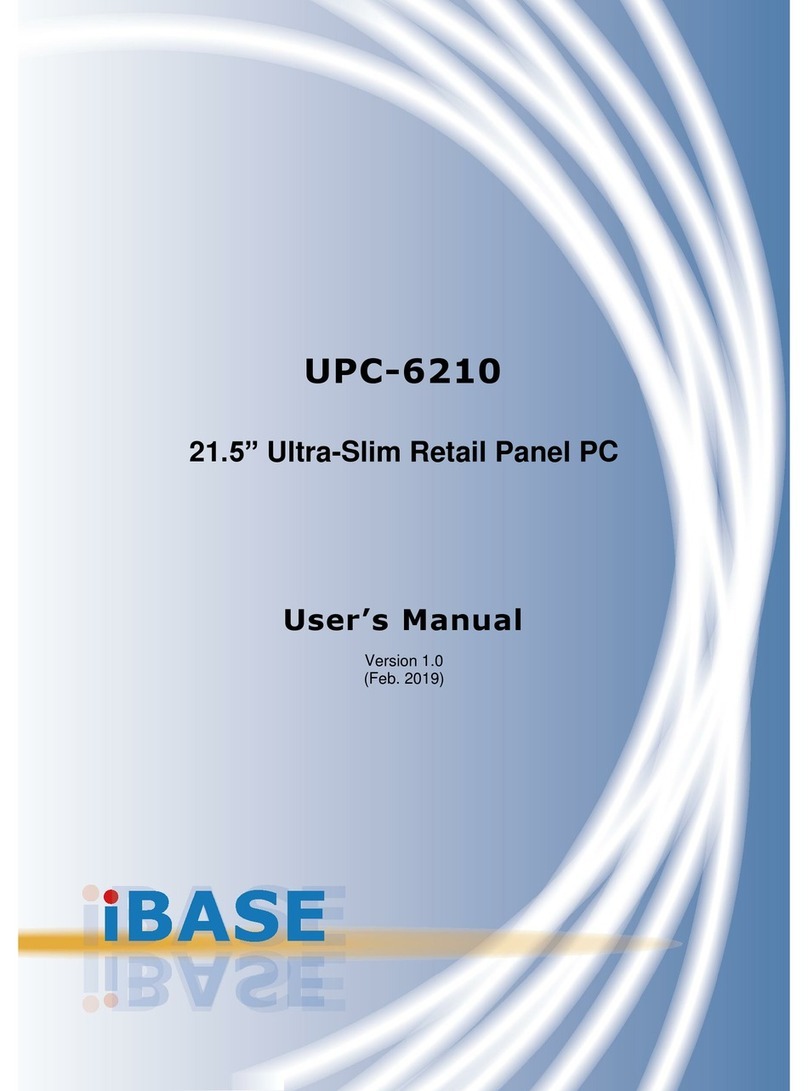EMAC PPC-E7+ User manual

PPC-E7+
ARM9 Panel PC
User Manual
REV. 1.3
Copyright 2012, 2015
EMAC, Inc.

Table of Contents
Disclaimer ................................................................................................................................ 1
1PPC-E7+ Product Summary.............................................................................................. 2
1.1 Features.......................................................................................................................................................2
1.2 Standard PPC Specifications.......................................................................................................................3
2PPC-E7+ Product Details .................................................................................................. 5
2.1 Jumper Configuration & Connector Descriptions.........................................................................................5
2.2 Power Connectors........................................................................................................................................5
2.3 Ethernet........................................................................................................................................................6
2.4 Serial Ports...................................................................................................................................................6
2.5 USB Host Ports............................................................................................................................................7
2.6 Audio Port.....................................................................................................................................................8
2.7 LCD Brightness Control ...............................................................................................................................8
2.8 MicroSD Card Socket...................................................................................................................................8
2.9 Keyboard/Mouse..........................................................................................................................................8
2.10 Analog Inputs ...............................................................................................................................................8
2.11 I/O Expansion...............................................................................................................................................8
2.12 Real-Time Clock ..........................................................................................................................................9
2.13 Serial Flash..................................................................................................................................................9
2.14 PCD-E12 Expansion ....................................................................................................................................9
2.15 Status LEDs and Reset................................................................................................................................9
3Software ........................................................................................................................... 10
4Appendix A: Connector Pinouts..................................................................................... 11
4.1 Ethernet 10/100 Base-T connector (JK2) ................................................................................................. 11
4.2 USB Connector (JK3, JK4, HDR5) ........................................................................................................... 11
4.2.1 PortA (JK3 - Host).............................................................................................................................. 11
4.2.2 PortC (JK4 - OTG)............................................................................................................................. 11
4.2.3 PortA/B (HDR5) ................................................................................................................................. 11
4.3 Power Jack (JK1)...................................................................................................................................... 11
4.4 Power Connector (J1) ............................................................................................................................... 11
4.5 MicroSD Socket (SOK1) ........................................................................................................................... 12
4.6 TTL LCD/Touch/Backlight (CN6) .............................................................................................................. 12
4.7 LVDS LCD/Touch/Backlight (HDR6)......................................................................................................... 13
4.8 PCD-E12 Expansion connector (ABJ1) .................................................................................................... 13
4.9 COMA RS-232 serial port (CN2)............................................................................................................... 13
4.10 COMB RS-232 Serial Port (HDR3).......................................................................................................... 14
4.11 COMC RS-232/422/485 Serial Port (HDR4)............................................................................................ 14
4.12 COMD RS-232 Serial Port (HDR2).......................................................................................................... 14
4.13 Misc. General Purpose I/O (HDR1)........................................................................................................... 15
4.14 Touch Screen Connector (CN1) ............................................................................................................... 15
4.15 Touch Screen Connector (CN3) ............................................................................................................... 15
4.16 LCD Backlight Connector (CN4)............................................................................................................... 15
5Appendix B: Jumper Settings ........................................................................................ 16
6Appendix C: Mechanical drawing of Mounting Plate with dimensions....................... 17

PPC-E7+ User Manual.doc -1- Rev 1.3 © 2015 EMAC, Inc.
Disclaimer
EMAC Inc. does not assume any liability arising out of the application or use of any of its products or designs.
Products designed or distributed by EMAC Inc. are not intended for, or authorized to be used in, applications such
as life support systems or for any other use in which the failure of the product could potentially result in personal
injury, death or property damage.
If EMAC Inc. products are used in any of the aforementioned unintended or unauthorized applications, Purchaser
shall indemnify and hold EMAC Inc. and its employees and officers harmless against all claims, costs, damages,
expenses, and attorney fees that may directly or indirectly arise out of any claim of personal injury, death or
property damage associated with such unintended or unauthorized use, even if it is alleged that EMAC Inc. was
negligent in the design or manufacture of the product.
EMAC Inc. reserves the right to make changes to any products with the intent to improve overall quality, without
further notification.

PPC-E7+ User Manual.doc -2- Rev 1.3 © 2015 EMAC, Inc.
1PPC-E7+ Product Summary
1.1 Features
Atmel AT91SAM9G45 or AT91SAM9M10 400Mhz ARM based Processor
Inexpensive Open-Frame Design
10/100BaseT Ethernet with on-board PHY
3 RS232 & 1 RS232/422/485
1 USB 2.0 (High Speed) Host port
1 USB 2.0 (High Speed) OTG port
Up to 256MB of SDRAM
Up to 512MB of NAND Flash
Up to 4MB of Serial Data Flash
Battery backed Real Time Clock
2 Micro SD/MMC Flash Card Sockets
1 I2S Audio port with Line-In/Line-Out
1 Audio Beeper
Timer/Counters and Pulse Width Modulation (PWM) ports
4 Channel 10-bit Analog-to-Digital converter
Operating Voltage of 12 to 26 Vdc.
Graphic LCD Interface with optional 2D acceleration & hardware CODECs (9M10)
WVGA (800 x 480) Resolution LCD with LED Backlight
Touchscreen Interface and Software Controlled Backlight On/Off & Brightness
JTAG for debug, including real-time trace
FREE Eclipse IDE with GCC & GDB development tools

PPC-E7+ User Manual.doc -3- Rev 1.3 © 2015 EMAC, Inc.
1.2 Standard PPC Specifications
CPU: Embedded Atmel AT91SAM9G45 or AT91SAM9M107 processor running at 400 MHz.
Flash:
SoM-9G45: 256 MB NAND Flash & 4 MB of Serial Data Flash.
SoM-9M10: 1 GB NAND Flash & 4 MB of Serial Data Flash.
RAM:
SoM-9G45: 128 MB 133 MHz DDR2.
SoM-9M10: 128 MB 133 MHz DDR2 & 128 MB of SDRAM, (256 MB Total).
Video:
SoM-9G45: LCD Video Interface with up 1280 x 860 resolution.
SoM-9M10: 2D Accelerated LCD Video Interface with up 1280 x 860 resolution.
Hardware CODECs: H.264, MPEG-4, MPEG-2, VC-1, H.263.
Image Processing: Image scaling, color conversion & image rotation
Touchscreen: 10-Bit, 4 wire analog resistive Touchscreen
Flash Disk: 2, 4-bit Parallel or SPI serial SDHC/MMC interfaces one of which terminates to an on-board Micro SD
socket.
System Reset: Supervisor with external Reset Button provision.
RTC: Battery backed Real Time Clock/Calendar using 32-bit free running counter.
Timers/Counters: 2, 3 channel, 16-bit timers/counters with capture, compare, and PWM. 20-bit interval timer plus
12-bit interval counter.
Watchdog Timer: External Watchdog/Supervisor using Maxim MAX823 chip.
Digital I/O: 32 General Purpose I/Os with 16 ma. drive when used as outputs.
Analog I/O: 8 channel, 10-bit A/D, with 4 channels utilized for 4-wire touchscreen interface.
Power: Power Management Controller allows selectively shutting down on processor I/O functionality and running
from a slow clock.
JTAG: JTAG for debug, including real-time trace
LCD
Display Type: 7" TFT Color LCD
Resolution: 800 x 480 WVGA @ 256K Colors
Dot pitch: 0.19mm x 0.19mm
Luminance: 330 (cd/m²)
Viewing Angle: 55°
Brightness: Software controlled
Backlight: White LED (33 LEDS)

PPC-E7+ User Manual.doc -4- Rev 1.3 © 2015 EMAC, Inc.
Touchscreen
Type: 4 Wire Analog Resistive
Resolution: Continuous
Light Transparency: 80%
Controller: Built-In
Driver: WinCE, Linux
Durability: Over one million touches
Ethernet interface
Ethernet MAC: on chip MAC
Ethernet PHY: Micrel KSZ8041 with software PHY shutdown control
Ethernet Type: 10/100 Base-T Ethernet
Ethernet Interface: On-Board RJ-45 connector
Solid-state Flash Disk
Resident: up to 1 GB NAND Flash
Removable: 8+ GB of SD, MMC, or SDHC Flash Disk
Utility: up to 4 MB of serial on-board NOR Flash
Mechanical and environmental
Dimensions: 7.55" L x 4.15" W x 1.5" H
Power supply voltage: +12 to +26 Vdc
Power requirements:
Typical: ~500 mA @ 12 Vdc.
APM Sleep: ~130mA @ 12 Vdc.
Operating temperature: 0 ~ 60° C (32 ~ 140° F)
Weight: 1.06 lbs
Standard Parts Inventory
PPC-E7+ Assembly with 7” Touchscreen LCD
Stainless Steel Mounting Bracket
Resident on-board flash disk loaded with Operating System
Three Serial Port cables
CD ROM with manuals and drivers

PPC-E7+ User Manual.doc -5- Rev 1.3 © 2015 EMAC, Inc.
2PPC-E7+ Product Details
2.1 Jumper Configuration & Connector Descriptions
The PPC-E7+ comes factory configured. In the event that jumpers need to be verified or modified this section
provides the information required, including instructions on setting jumpers and connecting peripherals, switches
and indicators. Be sure to read all the safety precautions before you begin any configuration procedure. See
Appendix A for connector pinouts and Appendix B for Jumper Setting descriptions.
Table 1: Jumpers
Label
Function
Default
JB1
Boot0 Source Selection
Position B
JB2
Boot1 Source Selection
Position A
JB3
Resident Flash Write Protect
Position B
JB4
RTC Battery ON/OFF
Off
JB5
Serial Port RS422/485 Tx Enable
422
JB6
Serial Port RS232 or 422/485 Mode
232
Table 2: Connectors
Label
Function
CN1
7” Touch Screen Connector
CN2
Serial Port COM A
CN3
10” Touch Screen Connector
CN4
7” LCD Backlight Connector
CN6
7” LCD Data Connector
J1
Vin Locking Connector
JK1
Vin Power Barrel Jack
JK2
Ethernet
JK3
USB Host Port A
JK4
USB OTG Port C
JK5
Audio Input Jack
JK6
Audio Output Jack
HDR1
Misc. I/O Connector
HDR2
Serial Port COM D
HDR3
Serial Port COM B
HDR4
Serial Port COM C
HDR5
Bulkhead USB Connector Port A & B
HDR6
LVDS & Touch Signal Connector
SOK1
MicroSD Card Socket
SOK2
200 pin SOM Socket
ABJ1
PCD-E12 Expansion Module Connector
2.2 Power Connectors
The PPC-E7+ provides two power connectors. J1 is an AMP/Tyco locking power connector (part# 640445-3),
three-pin type connector that mates with TE Connectivity part# 3-640600-3 power connector. Using this power
input provides for a more rugged/industrial locking connection. JK1 is a standard 5.5mm barrel jack with an inner
diameter of 2.1mm with a center V+ connection. This jack allows for easy connection to a wall mount power

PPC-E7+ User Manual.doc -6- Rev 1.3 © 2015 EMAC, Inc.
supply (EMAC part number PER-PWR-00035). The PPC-E7+’s power input uses a switching regulator and allows
a voltage input of +12V DC.
The pinout for the J1 power connector is as follows:
Pin Signal
1 +Vin (+12Vdc to 26Vdc)
2 Chassis GND
3 System GND
Before powering up the PPC-E7+, jumper JB1 should be moved to the “A” position.
2.3 Ethernet
The PPC-E7+ provides 10/100 Base-T full duplex Ethernet and uses a standard RJ-45 connector (JK2). It can be
connected straight to a hub, or another computer via a crossover Ethernet cable. The Ethernet MAC & PHY are
integrated into the SoM processor module. Activity and Link LEDs are integrated into the RJ45 connector.
2.4 Serial Ports
The PPC-E7+ is equipped with four serial ports, one of which terminates to a male DB9 and the other three which
terminate to 10pin header connectors (see table 2, 3, & 4 below). Three 10-pin header to male DB9 connector
cables are provided, giving easy access to these ports. Baud Rate, stop bits, etc. are all programmable for each
port via software.
COM A is an RS232 compatible port with a full complement of handshaking lines allowing it to communicate with
modems and other devices requiring hardware flow control.
COM B is an RS232 port. This port offers no handshake lines.
COM C can be configured to RS232, RS422, and RS485 via 2 jumpers. To select RS232 set jumper JB6 to 232
(this is the default). For RS422 set jumper JB6 to 4xx and jumper JB5 to 422. To select RS485, set jumper JB6 to
4xx and jumper JB5 to 485.
When using COM C in the RS422/485 mode, a terminating resistor (~120 Ohm) is recommended on the two far
ends of the network.
COM D is an RS232 port. This port offers no handshake lines.
Table 1 (COM A Pinout)
Pin Number
Pin Description for DB9
Connector
1
DCD
2
RxD
3
TxD
4
DTR
5
GND
6
DSR
7
RTS
8
CTS
9
RI
10
Shield

PPC-E7+ User Manual.doc -7- Rev 1.3 © 2015 EMAC, Inc.
Table 2 (COM B Pinout)
Pin Number
Pin Description for 10-
Pin Header
Pin Description for DB9
Connector
1
NC
NC
2
NC
RxD
3
RxD
TxD
4
NC
NC
5
TxD
GND
6
NC
NC
7
NC
NC
8
NC
NC
9
GND
NC
10
NC
-
Table 3 (COM C Pinout)
Pin Number
Pin Description for 10-Pin
Header
Pin Description for DB9
Connector
1
422/485 TX-
422/485 TX-
2
NC
232 RX, 422/485 TX+
3
232 RX, 422/485 TX+
232 TX, 422/485 RX+
4
RTS
422/485 RX-
5
232 TX, 422/485 RX+
GND
6
CTS
NC
7
422/485 RX-
RTS
8
NC
CTS
9
GND
NC
10
NC
-
Table 4 (COM D Pinout)
Pin Number
Pin Description for 10-
Pin Header
Pin Description for DB9
Connector
1
NC
NC
2
NC
RxD
3
RxD
TxD
4
NC
NC
5
TxD
GND
6
NC
NC
7
NC
NC
8
NC
NC
9
GND
NC
10
NC
-
2.5 USB Host Ports
The PPC-E7++ provides one, USB 2.0 (USB PortA) high speed host port (JK3). USB PortA and PortB can be
accessed from the bulkhead connector (HDR5). EMAC can provide a cable (CAB-40-004) to access these ports.
In addition to the one USB Host port, the PPC-E7+ provides a USB On-The-Go (OTG) port. This port can be used
as either a USB Host or USB Device port.
All of the USB ports are equipped with 500mA re-settable Polyfuses. If a USB Device tries to draw more than
500mA from the port, the fuse will open until the device is unplugged or its current requirement is reduced. There
is no software provision for shutting down power to the Ports or detecting when a port is drawing too much
current.

PPC-E7+ User Manual.doc -8- Rev 1.3 © 2015 EMAC, Inc.
Note: When sizing a power supply, make sure to allow for USB Device consumption. A device can potentially
draw 500mA, therefore these devices could use a total of up to 1 amp of power.
2.6 Audio Port
The PPC-E7+ provides Audio Line Out and Line In capability through two standard audio jacks (JK5 & JK6).
Audio Jack JK5 is stereo line level input and Audio Jack JK6 is stereo line level output. The processor interfaces
to the Audio CODEC through its I2S interface. Command control of the CODEC is done using the processor’s SPI
interface. The CODEC is the Cirrus CS4271, which is a high performance 24-bit Stereo CODEC offering superior
sound quality.
Both the input and output are line level. You will probably not be able to drive an unamplified speaker although
standard headphones will work. Likewise, an un-amplified microphone probably will not work as an input although
the line out of a CD player will work.
2.7 LCD Brightness Control
The PPC-E7+ offers LCD brightness control that can change the brightness of the LCD via software. The LCD
utilizes LED backlighting. The board provides the backlight with approximately 10 volts at about 220mA. The
processor provides a PWM (SoM pin# 85) that is used to drive the LCD backlight. Changing the duty-cycle of the
PWM directly affects the brightness of the LCD. In addition, the backlight can be turned off or on via SoM port line
GPIO0 (SoM pin#114). This allows screensaver software to automatically turn off the backlight when the unit is
not being used and to automatically turn it back on when the touchscreen is touched.
2.8 MicroSD Card Socket
The PPC-E7+ provides two a high capacity MicroSD sockets. One socket is resident on the Carrier and
accessible from the board coast line, the other is resident on the module. Both sockets are hot-swappable and
can accept a wide variety of Flash Cards. A green activity light (LED LD3) is located towards the left side of the
socket on the Carrier while the socket on the module does not provide a status LED. When the processor is
accessing the Flash card this LED will be lit and the card should not be removed at this time. A card that is written
to by the PPC-E7+ can be read by another computer using an MicroSD card reader. The MicroSD interface is
compatible with Standard and High Capacity MicroSD cards
2.9 Keyboard/Mouse
The PPC-E7+ does not provide a PS/2 type keyboard/mouse interface. However, a USB keyboard and mouse
can be used if required.
2.10 Analog Inputs
The analog inputs are available on HDR1 (see table 5 below) and are labeled as analog_04, analog_05,
analog_06 and analog_07. Note: Using these A/Ds may degrade the touch screen performance and/or accuracy.
2.11 I/O Expansion
The Processor used by the PPC-E7+ provides a number of unused I/O lines. The PPC-E7+ provides access to
these lines on connector HDR1. This 44-pin dual row header contains GPIO lines, SPI bus, I2C bus, A/D lineS,
interrupts and power pins. Signal names listed in the table below are the SoM names as defined in the SoM 200
pin specification.

PPC-E7+ User Manual.doc -9- Rev 1.3 © 2015 EMAC, Inc.
Pin
Signal
Pin
Signal
1
3.3V
2
3.3V
3
GPIO1
4
GPIO4
5
GPIO2
6
GPIO5
7
GPIO3
8
GPIO6
9
INT0
10
GPIO7
11
INT1
12
GND
13
OSC0
14
GND
15
OSC1
16
GND
17
ADC4
18
GND
19
ADC5
20
GND
21
ADC6
22
GND
23
ADC7
24
GND
25
SPI_MISO
26
GND
27
SPI_MOSI
28
GND
29
31
33
35
37
39
41
43
SPI_CLK
SPI_CS3
SPI_CS1
I2C_DAT
I2C_CLK
*SOM_RSTOUT
5V_VCC
GND
30
32
34
36
38
40
42
44
GND
GND
GND
GND
GND
GND
5V_VCC
GND
2.12 Real-Time Clock
The PPC-E7+ is equipped with an external battery for backing up the module’s Real-Time Clock (RTC). Drivers to
access the RTC are included in the operating systems. Jumper JB4 should be placed in the ON position in order
to retain system time when powered down.
2.13 Serial Flash
PPC-E7+ is equipped with 4MB of SPI based serial NOR flash. The PPC-E7+ can high-level boot from either the
Serial Data NOR Flash or the NAND Flash (selected through the low-level bootloader). It is recommended to
high-level boot from the Serial Data Flash, as this Flash is more reliable than the NAND Flash. The NAND flash is
ideal for the Operating System’s File System which can normally handle marked bad blocks.
The Serial Data Flash is connected to SPI0 and uses SPI0_NPCS0 to enable it. The Serial Data Flash also has a
Write Protect Provision. To Write Protect the Serial Data Flash set JB3 to position B. See the software drivers for
details on accessing this.
2.14 PCD-E12 Expansion
If additional I/O is required the PCD-E12 daughter card can be utilized. This card connects to the PPC-E7+ via
SPI bus on connector ABJ1. The PCD-E12 features CAN, A/D, D/A, Serial Ports, and GPIO. For more info on the
PCD-E12 go to:
www.emacinc.com/sbc_pc_compatible/pcm_53e52.htm.
2.15 Status LEDs and Reset
The PPC-E7+ provides two status LEDs, LD1 (Green) and LD2 (Red). These can be controlled independently via
software (GPIO13 & GPIO12 respectively). LD1 and LD2 are located just to the left of the SD/MMC socket.
Also provided is a Reset Button (PB1). Pressing this button will cause the system to reset.

PPC-E7+ User Manual.doc -10- Rev 1.3 © 2015 EMAC, Inc.
3Software
This Product offers a wide variety of software support from both open source and proprietary sources.
For more information on software support, please visit the EMAC Wiki Software Section at:
http://wiki.emacinc.com/wiki/Software
Note: All of the links in this document are subject to change. Please contact EMAC for updated link locations if
necessary.

PPC-E7+ User Manual.doc -11- Rev 1.3 © 2015 EMAC, Inc.
4Appendix A: Connector Pinouts
4.1 Ethernet 10/100 Base-T connector (JK2)
Pin Signal
1 XMT+
2 XMT-
3 RCV+
4 N/C
5 N/C
6 RCV-
7 N/C
8 N/C
4.2 USB Connector (JK3, JK4, HDR5)
4.2.1 PortA (JK3 - Host)
Pin Signal
1 USB_PWR (5Vdc)
2 USB_Data-
3 USB_Data+
4 GND
4.2.2 PortC (JK4 - OTG)
Pin Signal
1 USB_VBUS
2 USB_Data-
3 USB_Data+
4 USB_ID
4 GND
4.2.3 PortA/B (HDR5)
Pin Signal Pin Signal
1 USB_PWR_A 2 USB_PWR_B
3 USB_HOSTA- 4 USB_HOSTB-
5 USB_HOSTA+ 6 USB_HOSTB+
7 GND 8 GND
9 Chassis GND 10 NC
4.3 Power Jack (JK1)
Pin Signal
Center 5V DC
Barrel GND
4.4 Power Connector (J1)
Pin Signal
1 Vin
2 Chassis GND
3 System GND

PPC-E7+ User Manual.doc -12- Rev 1.3 © 2015 EMAC, Inc.
4.5 MicroSD Socket (SOK1)
Pin Signal
1 DAT2
2 CD/DAT3
3 CMD
4 VCC (3.3V)
5 SCLK
6 GND
7 DAT0
8 DAT1
9 SD Card Detect
4.6 TTL LCD/Touch/Backlight (CN6)
Pin Signal
1 CLK
2 HSYNC
3 VSYNC
4 GND
5 R0
6 R1
7 R2
8 R3
9 R4
10 R5
11 GND
12 G0
13 G1
14 G2
15 G3
16 G4
17 G5
18 GND
19 B0
20 B1
21 B2
22 B3
23 B4
24 B5
25 GND
26 DEN
27 VCC
28 VCC
29 R/L
30 U/D

PPC-E7+ User Manual.doc -13- Rev 1.3 © 2015 EMAC, Inc.
4.7 LVDS LCD/Touch/Backlight (HDR6)
Pin Signal Pin Signal
1 GND 2 GND
3 3.3V 4 3.3V
5 RED - 6 RED +
7 GND 8 GND
9 GREEN - 10 GREEN +
11 GND 12 GND
13 BLUE - 14 BLUE +
15 GND 16 GND
17 CLOCK - 18 CLOCK +
19 VLED +5V 20 VLED +5V
21 BRIGHTNESS 22 GND
23 EDID DATA 24 EDID CLOCK
25 3.3V 26 VLED +5V
27 Y2 28 X2
29 Y1 30 X1
31 GND 32 GND
33 VIN 34 VIN
4.8 PCD-E12 Expansion connector (ABJ1)
Pin Signal
1 Vin
2 Reset
3 GND
4 SPI_MOSI
5 INT2 (5V)
6 SPI_MISO (5V)
7 SPI_CS0
8 SPI_CLK
9 (5V)
10 GPIO15
Note: The PCD-E12 is a 5V powered board. As such, logic signals are transferred from 3V to 5V and 5V
to 3V for communication between the PPC-E7+ and the PCD-E12.
4.9 COMA RS-232 serial port (CN2)
Pin DB9 Signal
1 DCD
2 RxD
3 TxD
4 DTR
5 GND
6 DSR
7 RTS
8 CTS
9 RI

PPC-E7+ User Manual.doc -14- Rev 1.3 © 2015 EMAC, Inc.
4.10 COMB RS-232 Serial Port (HDR3)
Pin HD3 Signal DB9 Signal
1 NC NC
2 NC RxD
3 RxD TxD
4 NC NC
5 TxD GND
6 NC NC
7 NC NC
8 NC NC
9 GND NC
10 NC --
4.11 COMC RS-232/422/485 Serial Port (HDR4)
Pin HD3 Signal DB9 Signal
1 422/485 TX- 422/485 TX-
2 NC 232 RX, 422/485 TX+
3 232 RX, 422/485 TX+ 232 TX, 422/485 RX+
4 RTS 422/485 RX-
5 232 TX, 422/485 RX+ GND
6 CTS NC
7 422/485 RX- RTS
8 NC CTS
9 GND NC
10 NC -
4.12 COMD RS-232 Serial Port (HDR2)
Pin HD3 Signal DB9 Signal
1 NC NC
2 NC RxD
3 RxD TxD
4 NC NC
5 TxD GND
6 NC NC
7 NC NC
8 NC NC
9 GND NC
10 NC --

PPC-E7+ User Manual.doc -15- Rev 1.3 © 2015 EMAC, Inc.
4.13 Misc. General Purpose I/O (HDR1)
Pin Signal Pin Signal
1
3
3.3V
GPIO1
2
4
3.3V
GPIO4
5
GPIO2
6
GPIO5
7
GPIO3
8
GPIO6
9
INT0
10
GPIO7
11
INT1
12
GND
13
OSC0
14
GND
15
OSC1
16
GND
17
ADC4
18
GND
19
ADC5
20
GND
21
ADC6
22
GND
23
ADC7
24
GND
25
SPI_MISO
26
GND
27
SPI_MOSI
28
GND
29
31
33
35
37
39
41
43
SPI_CLK
SPI_CS3
SPI_CS1
I2C_DAT
I2C_CLK
*SOM_RSTOUT
5V_VCC
GND
30
32
34
36
38
40
42
44
GND
GND
GND
GND
GND
GND
5V_VCC
GND
4.14 Touch Screen Connector (CN1)
Pin Signal
1 Y+
2 X+
3 Y-
4 X-
4.15 Touch Screen Connector (CN3)
Pin Signal
1 Y+
2 X+
3 Y-
4 X-
4.16 LCD Backlight Connector (CN4)
Pin Signal
1 VOUT (+)
2 SWITCHED GND (-)

PPC-E7+ User Manual.doc -16- Rev 1.3 © 2015 EMAC, Inc.
5 Appendix B: Jumper Settings
JB1 Boot0 Source Selection
Jumper Position Setting
Pins 2 & 3 A Serial Boot Loader Download (EBI)
Pins 1 & 2* B Normal Boot from Flash (DBI)
* Default setting
JB2 Boot1 Option Selection
Jumper Position Setting
Pins 2 & 3* A Flash Enable (FE)
Pins 1 & 2 B Flash Disable (FD)
* Default Setting
JB3 Flash Write Protect
Jumper Position Setting
Pins 2 & 3 A Resident Flash Disable
Pins 1 & 2* B Resident Flash Enable
* Default setting
JB4 RTC Battery Enable
Jumper Position Setting
Pins 1 & 2 ON Enable Battery Backup
Pins 2 & 3* OFF Disable Battery Backup
* Default setting
JB5 RS485/RS422 Select
Jumper Position Setting
Pins 1 & 2 485 Select RS485
Pins 2 & 3* 422 Select RS422
* Default setting
JB6 RS232/RS4xx Select
Jumper Position Setting
Pins 1 & 2* 232 Select RS232
Pins 2 & 3 4xx Select either RS422 or RS485 depending on JB5
* Default setting

PPC-E7+ User Manual.doc -17- Rev 1.3 © 2015 EMAC, Inc.
6Appendix C: Mechanical drawing of Mounting Plate with dimensions
This manual suits for next models
1
Table of contents
Other EMAC Touch Panel manuals
